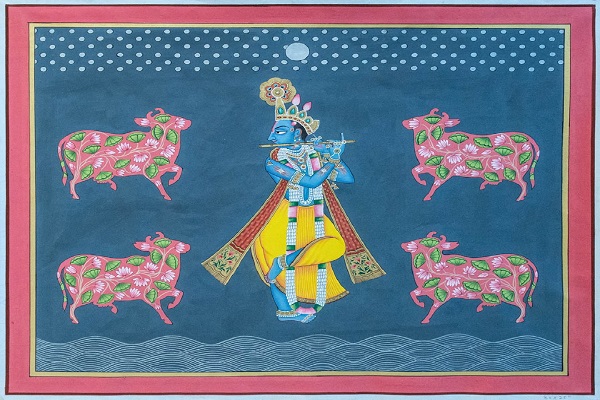
Hello, art enthusiasts!
Have you ever felt your heart skip when gazing upon a beautifully executed traditional painting? Or have you experienced a profound connection as if the artist's emotions echoed in your soul?
If you have, you're not alone– traditional paintings possess a unique power to stir the depths of our being and evoke many emotions.
In this voyage into the realm of art, we urge you to look at "A Palette of Emotions: Traditional Paintings That Move the Soul."
"Art washes away from the soul the dust of everyday life." - Pablo Picasso.
Let us embark on an enthralling journey in which brushstrokes and colors become the language of the heart, the canvas becomes a mirror reflecting the depths of human emotion, and each stroke reveals a tale waiting to be revealed.
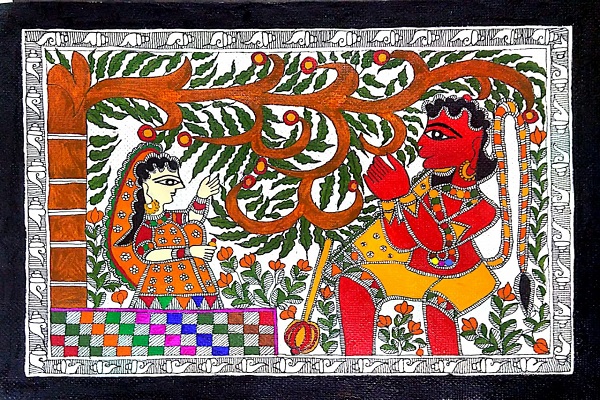
Traditional Paintings: A Glimpse into History, Culture, and Emotion
Traditional paintings are not merely beautiful images captured on canvas; they are portals to the past, windows into different cultures, and profound expressions of human emotion. In this section, we'll delve into the fascinating world of traditional paintings, exploring their various types, their rich history, and the emotional resonance that makes them timeless treasures.
Types of Traditional Paintings
Traditional paintings cover a vast range of styles and genres, each with its own distinct qualities and cultural significance. Here are some examples of renowned traditional paintings:
1. Renaissance Art
Renaissance art is noted for its realism and attention to detail. Also, it flourished in Europe from the 14th through the 17th centuries. The "Mona Lisa" by Leonardo da Vinci and "The Creation of Adam" by Michelangelo are iconic works from this period.
2. Impressionism
Impressionist painters strove to depict the transitory effects of light and color in the late nineteenth century. Artists such as Claude Monet and Pierre-Auguste Renoir created works that appeared alive, such as Monet's "Water Lilies."
3. Chinese Brush Painting
Rooted in Chinese culture for over a thousand years, brush painting emphasizes harmony and balance. Delicate landscapes, elegant calligraphy, and expressive wildlife are common subjects in this art form.
4. Indian Miniature Painting
These intricate paintings, dating back to the Mughal era, showcase vibrant colors and detailed patterns, and depict scenes from mythology, literature, and royal courts.
5. Japanese Ukiyo-e
Ukiyo-e, or "pictures of the floating world," depict the transient beauty of everyday life in Edo-period Japan. Famous artists like Hokusai created iconic woodblock prints, including "The Great Wave off Kanagawa."
6. African Tribal Art
African traditional art is diverse and rich, reflecting the continent's varied cultures. It often features masks, sculptures, and textiles that convey spiritual and cultural significance.
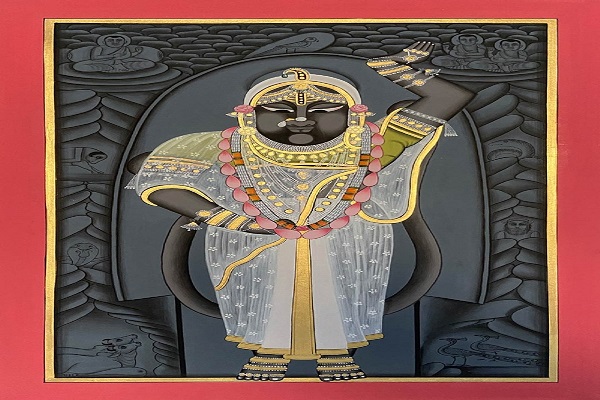
A Glimpse into History
Traditional paintings serve as invaluable historical records, offering insights into the societies and epochs in which they were created. They capture not only the appearance of the time but also the prevailing beliefs, customs, and societal norms.
For instance, the vivid hieroglyphics and mural paintings in the tombs of ancient Egypt reveal the importance of religion and the afterlife in Egyptian culture. The European Renaissance period saw the revival of classical art and the celebration of humanism, with paintings often depicting religious themes alongside newfound interest in the natural world.
In contrast, the serene landscapes of Chinese brush painting often reflect the influence of Daoism and Confucianism, emphasizing harmony with nature and moral values. These historical contexts add layers of depth and emotion to traditional paintings, making them not only beautiful but also educational and thought-provoking.
Emotional Resonance
What sets traditional paintings apart is their unique ability to evoke emotions that resonate with viewers across time and space. Whether it's the subtle smile of the Mona Lisa or the powerful symbolism in a Chinese dragon painting, these artworks have the power to move us in profound ways.
The emotional impact of traditional paintings can be attributed to several factors:
1. Visual Language: Artists use color, composition, and technique to convey emotions. Bold, contrasting colors may evoke excitement, while soft, muted tones can induce a sense of calm.
2. Storytelling: Many traditional paintings tell stories, whether it's a biblical narrative in European art, an epic tale in Indian miniatures, or a scene from daily life in Ukiyo-e. These narratives engage viewers emotionally, drawing them into the depicted world.
3. Cultural Significance: Understanding the cultural and historical context of a painting can deepen its emotional impact. For example, knowing the symbolism behind a Chinese peony painting can enhance one's appreciation of its beauty.
4. Personal Connection: Viewers often form personal connections with specific paintings. An artwork may remind them of a cherished memory, convey a universal emotion, or simply resonate with their individual experiences.
Also Read: Traditional Paintings Depicting the Mystical Aura of Lord Shiva
Durga Paintings: A Triumph of Traditional Art
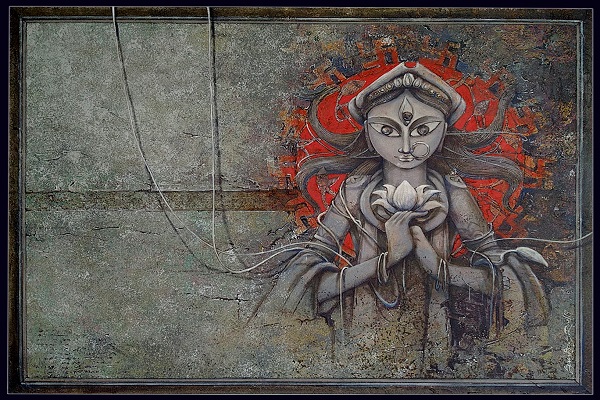
Art is the lie that enables us to realize the truth. – Pablo Picasso
Art, in all its forms, has a remarkable capacity to reveal truths and evoke emotions. Traditional art, in particular, possesses a timeless allure, connecting us with the wisdom and creativity of generations past. Among the myriad forms of traditional art, Durga paintings stand as a resplendent triumph of artistry, culture, and spirituality.
The Resilience of Traditional Art
In a rapidly evolving world, traditional art serves as a bridge to our cultural heritage, reminding us of the timeless beauty that exists beyond the boundaries of time and technology. Durga paintings, in their captivating portrayal of the goddess, encapsulate this essence.
Durga paintings have a rich and enduring legacy in Indian artistry. They celebrate the goddess Durga, a symbol of divine strength and feminine power. With their intricate details, vibrant colors, and spiritual depth, these paintings have captured the hearts of art enthusiasts, collectors, and devotees alike.
Durga Paintings: A Popular Choice
The popularity of Durga paintings extends far beyond the realm of religious worship. While they are undoubtedly treasured by those who hold Durga in deep reverence, these artworks also resonate with admirers of art for their aesthetic and emotional appeal.
Durga paintings often find their way into homes, offices, and public spaces as symbols of strength, resilience, and inner power. Their vibrant hues and the goddess's serene yet powerful presence make them not just religious icons but also cherished pieces of decorative art.
Decorating with Durga Paintings
Integrating Durga paintings into your decor can transform your space into a haven of beauty and inspiration. Here are some ideas on how you can use these artworks to enhance your surroundings:
1. Home Sanctuaries: Hang a Durga painting in your meditation or prayer room to create a sacred atmosphere that fosters inner peace and spiritual connection.
2. Living Spaces: Adorn your living room or bedroom with Durga paintings to infuse your living space with positive energy and a touch of elegance.
3. Office Spaces: In corporate settings, Durga paintings can serve as symbols of strength and determination, motivating and inspiring your team.
4. Gifts with Meaning: Consider gifting a Durga painting to a loved one as a token of empowerment and protection.
Interesting Blog: Durga Paintings And Its Significance

Discover Durga Paintings on IndianArtIdeas
In the age of the internet, the world of art has become more accessible than ever. One platform that has been instrumental in connecting art enthusiasts with remarkable Durga paintings is IndianArtIdeas. This online art gallery features a large range of traditional and contemporary Indian art, including stunning Durga paintings.
Whether you're an art collector trying to diversify your collection or a home decorator wishing to bring the beauty of Durga into your home, IndianArtIdeas has a wide choice of possibilities. You may easily explore, choose, and even purchase these wonderful artworks from the comfort of your own home.
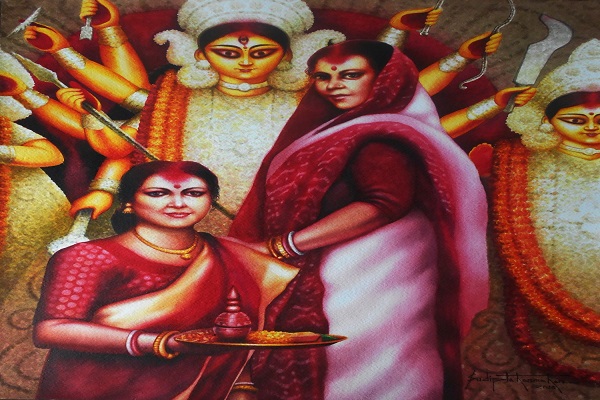
Conclusion: A Celebration of Tradition and Artistry
Durga paintings exemplify the fusion of tradition and artistry, showcasing the goddess's divine strength while simultaneously captivating the senses. Their popularity extends beyond religious boundaries, finding their place in both spiritual sanctuaries and modern living spaces.
In the words of Pablo Picasso, art is a means to realize truths, and Durga paintings, with their intricate details and spiritual depth, certainly achieve that. They encourage us to find our inner strength, appreciate the beauty of tradition, and surround ourselves with the victory of classic art. Whether you're a collector, an art enthusiast, or simply want to spruce up your living space, Durga paintings provide an exceptional chance to connect with India's spiritual and creative legacy.
Traditional Paintings: FAQs
What are some popular themes in traditional Indian paintings?
Traditional Indian paintings encompass a wide range of themes, reflecting the country's diverse culture and history. Some popular themes include:
- Religious and Mythological Stories
- Royalty and Court Life
- Nature and Landscapes
- Mughal Miniatures
- Rural Life
- Abstract and Contemporary Art
- Portraits
How can I take care of and preserve my traditional paintings?
Proper care and preservation of traditional paintings are essential to ensure their longevity and beauty. Here are some tips:
- Handling
- Framing
- Avoid Direct Sunlight
- Humidity Control
- Cleaning
How do I ensure the authenticity of a Durga painting before purchase?
Consider elements such as the artist's or art seller's reputation, the presence of a certificate of authenticity, and the provenance of the artwork to confirm the authenticity of a Durga painting. Reputable art galleries and internet platforms frequently include thorough information about the artist and the history of the painting, making authentication easy.
Are Durga paintings suitable for gifting on special occasions?
Yes, Durga paintings make thoughtful and meaningful gifts for special occasions, especially when you want to convey blessings, strength, or protection to a loved one. They are often given at festivals like Navratri and Durga Puja, as well as during weddings, housewarmings, and other auspicious events.





















